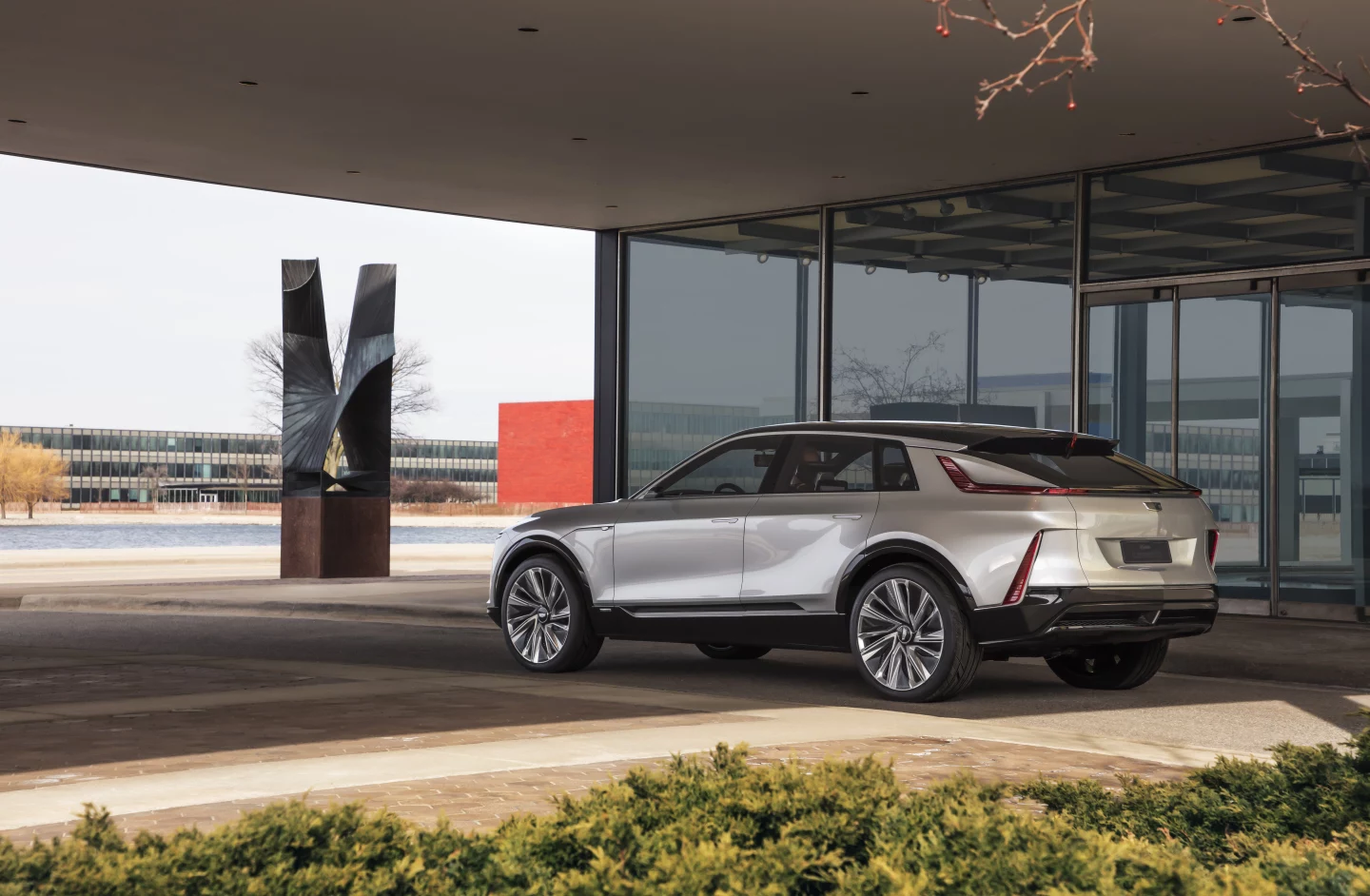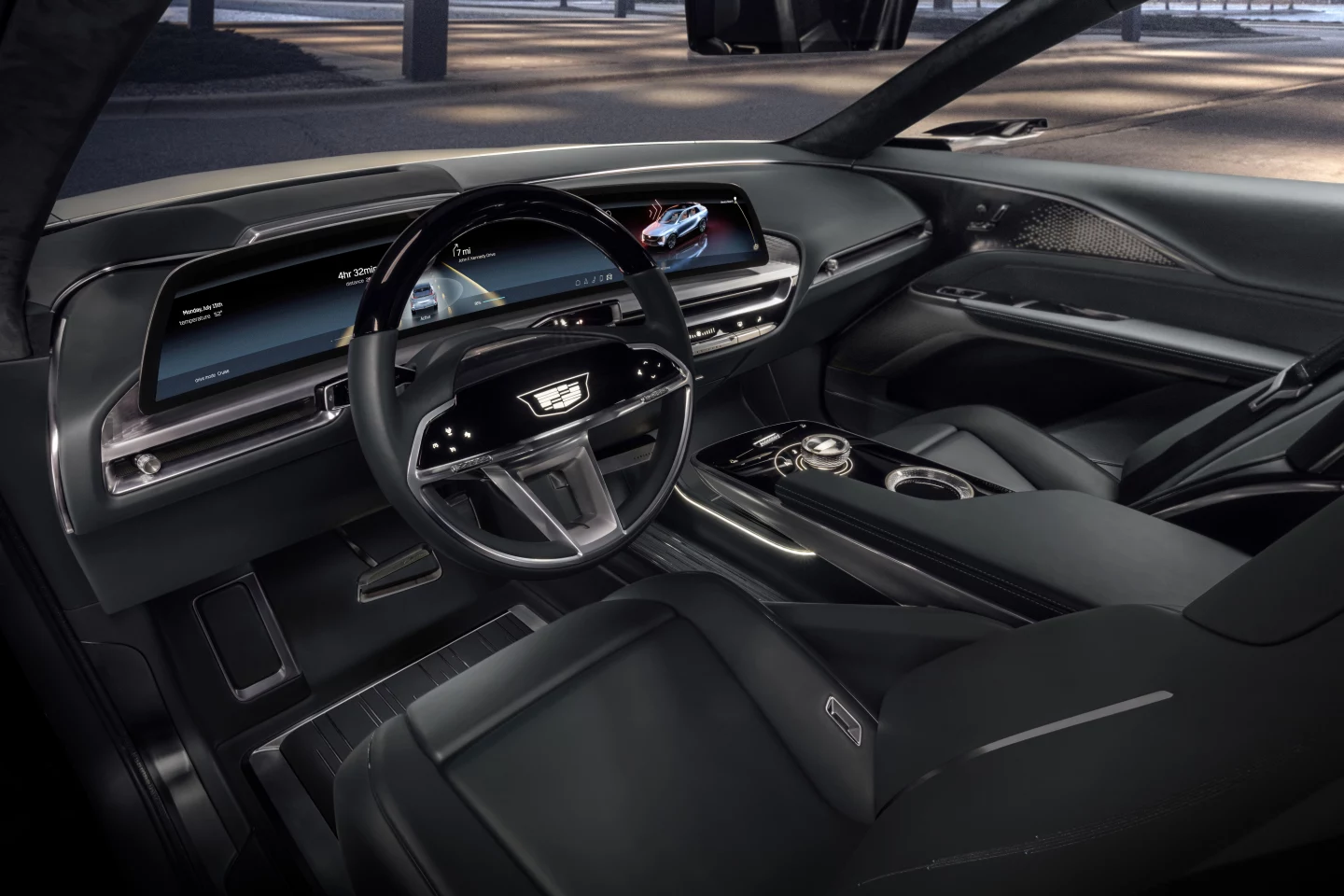Cadillac has unveiled its Lyriq show car, the first car based on GM's next-gen modular EV platform and the harbinger of a new electric design language for the brand. Its nickel-cobalt-manganese-aluminum (NCMA) structural battery pack holds 100 kWh, for a range over 300 miles (480 km).
In a typically self-congratulatory online automotive event, GM spoke of "redefining American luxury" with "experiences that engage the senses, anticipate desires and enable our customers to go on extraordinary journeys." It can be hard to peer beyond this cascade of over-the-top bloviation, but certain things are clear: the design team is particularly stoked with its efforts on this clean-sheet Caddy, and the Ultium EV drive system that will underpin GMs electric future all the way up to the Hummer EV looks like a solid and flexible platform to build on.
The Ultium system is based on a flat underfloor battery pack designed around the idea of using the smallest number of the largest cells as possible. The cells themselves are large, flat pouches instead of stacked cylinders, with battery electronics built into the modules themselves.

The NCMA battery chemistry adds aluminum to the cathode, eliminating 70% of the cobalt GM was using previously. The upshots should be a cheaper battery pack with higher density and greater charging capability. The system will handle DC fast-charging at rates up to 150 kW, or level 2 charging at 19 kW.
While it doesn't offer a true end-to-end skateboard chassis like the crazy REE design out of Israel, the Ultium system fills the underfloor space between the axles with cells, leaving the drive motors to sit fore and aft. In standard form, the Lyriq will use a single rear motor, but there's also the option to add a second motor at the front for AWD and high-performance applications. All you'll lose is a little frunk space.

Caddy is using the Lyriq as a showcase of some other interesting tech, such as "dual pane" augmented reality head-up displays. Some information will look like it's floating on the hood, other bits appear overlaid on the road ahead. The Super Cruise hands-free highway driving feature is upgraded to handle on-demand lane changes, and super-tight parking spaces become more accessible since the Lyriq can now park itself, parallel or perpendicular, whether the driver is in the car or not.
The interior design is a bit sexier than these photos really convey, using a layered approach combining smooths and textures, the reflective with the matt, metals, leathers and woods. Lots of lovely little details coalesce into a nicely integrated whole, and the dash and infotainment systems are combined into a single, colossal screen that stretches to the outer edge of the center console.

Lighting has had a lot of attention too, with lots of animations outside and inside. When it notices its master approaching, the Lyriq lights up with a big grin starting from the logo on the grill, and there are plenty of surfaces, including the door handles, the top of the steering wheel and backlighting behind the speaker grilles, that use light in creative ways.
The Lyriq is described as a "show car" – it's not exactly a concept, because it's destined for production. But production won't happen until 2022, so there's enough scope for changes in the interim that Cadillac's hedging its bets. It's a pity, Cadillac can probably be relied upon to put together a higher quality car than Tesla at this point, and the Lyriq would be a really nice option right now in 2020. But this industry is moving at unprecedented speeds, so we'll have to wait and see how it stacks up in two years' time.
The launch video below is worth a look.
Source: Cadillac




















